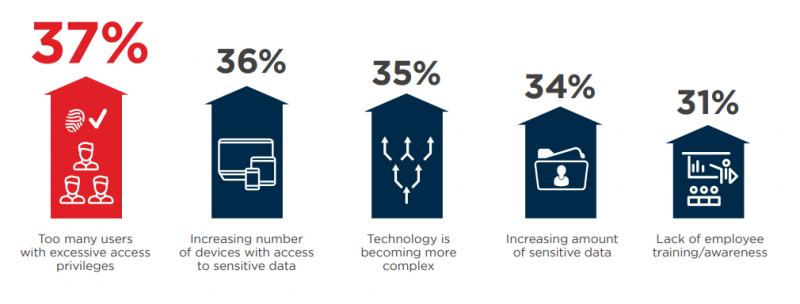Doubling your revenue sounds impossible.
How can these billing tips double your law firm’s revenue at a time when many firms are experiencing a decline in demand for legal services? According to the 2019 State of the Legal Market, law firm realization rates have dropped significantly and continued to decline since the Great Recession. This has harmed firm revenues.
Is it possible in this economic climate for a firm to double its revenue?
Doubling your revenue: More about you, less about competition
These billing tips are more about your behavior than they are about your competitors and their actions. Boosting your income comes down to three best practices.
- Minimizing errors and mistakes
- Increasing your firm’s income
- Layering your firm’s income
In my [previous post], I shared several strategies you can use to reduce billing mistakes. In this post, we’ll focus on the strategies you can use to double your firm’s revenues.
Let’s take a look.
Billing tips to increase your firm’s revenue
First, some important disclaimers:
- The strategies I mention may require modification to work correctly.
- Some of them may not work in your jurisdiction due to legal constraints.
- For many of you, these strategies will work well, which may create a (different) set of problems.
I’ve written comprehensive guides on each of these topics; I recommend that you take a look at them.
You can increase your firm’s income in a variety of ways:
- Boost your firm’s utilization rate with utilization optimization. Your utilization rate is a reflection of your firm’s productivity and billing efficiency. The higher your utilization rate, the more revenue (and profit) your firm can generate. Here’s how you calculate your utilization rate: Billable hours/total # of hours recorded in a particular period = utilization rate.
- Offer online payments offer a simple solution to increase revenue flow by decreasing the time it takes to collect on client invoices. Clients are more likely to pay you faster if you offer a payment option they’re use to using in their everyday. Payment processors like Bill4Time Payments are built-in to your practice management software
- Increase your firm’s productivity. Believe it or not, it is possible to 2x or even 4x your productivity. To boost your firm’s productivity, you’ll need to make the distinction between toil and productivity. Toil refers to tedious, exhausting, and repetitive busywork that’s never-ending. Productivity is work that rings the meter, taking you closer to your goals and objectives.
- Educate to attract new clients. Education is the key to attracting a steady stream of clients. While many firms have a problem with selling, very few have a problem with educating prospective clients. As it turns out, education attracts clients consistently because it does two things well. First, it identifies a problem clients have, and second, it positions you as the solution to your prospective client’s problem. Once you’ve educated clients, they’ll approach you as a prospect. This is when you provide them with information. When I use the word information, I’m referring to details like your billing policies, available AFAs, client references, practice areas, years of experience, cases won, etc. Information turns prospects into clients.
- Create win-win-win origination credit schemes. To quote Jim Cotterman, principal at Altman Weil, origination credit schemes are “the single most important determinative factor in partner compensation.” Origination plans are crucial to your firm’s survival. Research shows, when clients were served by three practice groups, revenues were 5.7 times higher than those served by one. Clients who were served by five practice groups generated fees that 17.6 times higher than those served by one. This also prevents poaching. When multiple practice groups serve clients, they remain loyal to the firm, rather than an individual attorney. This is the single, most effective way to boost employee morale, increase firm business, and keep clients.
- Promote your firm with the right tools and resources. You can use State Bar referrals, CLE credits, Facebook, PR, and other channels to promote your law firm and amplify business development. Using the right tools and resources, you can attract a steady stream of prospects from a variety of sources who are all eager to work with your firm.
Each of these strategies can double your income on their own but that’s not the most efficient use of these strategies.
A better approach?
You double or triple up on these strategies; find the approach that works best for you, get it to a place where it’s working for your firm. Then you add another strategy from the list, then another. These are big problems, but they produce a disproportionately large amount of revenue for your firm when you get them right.
It isn’t hard. It just requires hard work.
The strategies I’ve shared above are conventional approaches you can use to double your firm’s revenue. In the next section, we’ll take a look at transformative results.
Here’s the difference.
- Conventional results create trust. Conventional results = doing your job exceptionally well. Being a great attorney, going above and beyond for clients and your team. Exceptional day-to-day performance increases. If you’re a real estate attorney, your documents and agreements are above reproach; your work is pristine, you’re fast, efficient, helpful, productive, etc.
- Transformative results build careers and firms. These are the extras, the above and beyond results that make things better for your firm, the industry, or clients as a whole. It’s doing what other attorneys or firms won’t or can’t do. Most real estate attorneys, for example, won’t take the time to run monthly webinars or workshops for real estate investors or corporate entities.
See what I mean?
Use these law firm billing tips to double your revenue
It’s not about them. It’s about you.
As we’ve seen, these billing tips are more about your behavior and the way your firm is structured than it is about your competitors. Boosting your income comes down to following and optimizing your firm around best practices.
Most firms don’t want to do the work.
It’s annoying, tedious, and occasionally difficult work. But this is also your opportunity. The research shows many firms are experiencing a decline in demand for legal services. Realization rates have dropped significantly and continued to decline since the Great Recession.
Law firms need to adapt to survive.
You have the blueprint; double or triple up on these strategies. Find the approach that works best for you then get it to a place where it’s working for your firm. Then, when you’re ready, add another strategy from the list.
Doubling your revenue isn’t impossible.
With a structured plan and clear steps to follow, you’ll find you have everything you need to double your firm’s revenue year-over-year.






